BEST FEMALE HAIR LOSS TREATMENT IN SINGAPORE
Bee Choo Origin Ladies is the only outlet for women out of all Bee Choo Origin salons, at 5 Pahang Street. Our customers have rated us as the best female hair loss treatment in Singapore, due to effectiveness as well as affordability.
EFFECTIVE HAIR LOSS TREATMENT IN SINGAPORE
Bee Choo Origin is the largest scalp/hair loss treatment salon that promises effective hair loss treatment in Singapore. This outlet is exclusively for women only, hence we are also known as the Best Female Hair Loss Treatment in Singapore. There are 21 outlets in Singapore, and more than 137 outlets across Asia Pacific. Annually we serve millions of happy customers with effective and proven results yet affordable. Well known for providing effective, affordable scalp treatment, oily itchy scalp treatment, dandruff treatment, postnatal hair loss treatment amongst others!
A recognised household brand name, established since 2000, our founder Madam Cheah Bee Chew and her brand has won numerous accolades from Singapore Agencies. You may read more from two articles written by Business Times Singapore titled“Power of testimonies drives business growth” and “Sincerity before profit“.


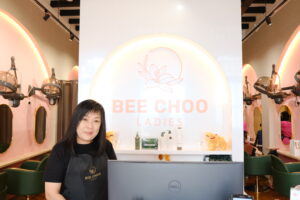

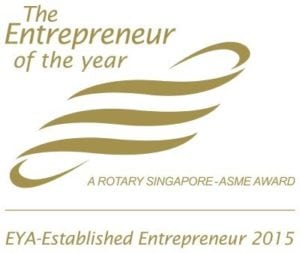



7 TYPES OF FEMALE HAIR LOSS TREATMENTS
The average human drops about 100 hairs per day, however, those suffering from hair loss can lose more than 300 hairs per day. Furthermore, those experiencing hair loss can also face miniaturisation of hair. The normal thickness for Asian hair type is between 0.008 cm to 0.012 cm with about 3 – 4 hairs per pore. A miniaturised hair can be as thin as 0.004 cm to 0.006 cm
When hair loss occurs, it is possible for both thickness of hair and the average number of hair per pore to lessen. When you start to experience thinning of the centre parting or even itching scalp, those are the signs of female hair loss problems. Learn more how we treat women hair loss at Bee Choo Ladies, Singapore.
Our scalp naturally secretes oil via the sebaceous glands and this oil protects the hair and sustains its structure. However, due to several factors, the sebum production could go into overdrive, causing excessive oil on the scalp, a condition known as seborrheic dermatitis.
At Bee Choo, our herbal paste contains a traditional Chinese herb known as Ling Zhi which is an adaptogen with a dual-modulating function. Ling Zhi helps to modulate your scalp regardless whether it is too oily or too dry, bringing your scalp back to its normal and healthy state after each itchy oily scalp treatment.
Grey hair occurs at the hair follicles where melanin pigment production had ceased (this is permanent!). Melanin gives hair its colour and also provides moisture, therefore, once production of melanin ceases at a particular follicle, white hair or grey hair is produced instead of normal coloured hair.
Many women opt for chemical colouring to cover their white hair, however, chemical dye often damages and dries the hair end, furthermore, chemical dye should not be used on the scalp, chemical dyeing your hair to the roots can damage the scalp and, in serious cases, may even lead to hair loss.
Bee Choo Origin’s herbal paste contains a natural copper dye which dyes white hair to the roots without damaging your scalp. Learn more at Bee Choo Ladies, your alternative as Herbal Hair Dye Salon in Singapore.
Dandruff is triggered the fungus, Malassezia globosa. The micro-organism is a cousin of the yeast and feeds on sebum. When the globosa grows too quickly, the natural renewal of cells will be disrupted. This causes the skin on the scalp to flake, forming dandruff. Other than flaking, individuals with dandruff may also have red patches on their scalp, and such people may experience itching, Eczema and hair loss.
Very often dandruff is caused by the wrong choice of shampoo. Bee Choo’s Purity Remove Shampoo is specially designed for our customers who have dandruff. Coupled with our special herbal hair treatment, dandruff problems can be treated in no time! Do not let dandruff embarrass you anymore, get rid of it today.
Certain diseases as a result of bacterial and/or fungal infection could cause severe hair loss. Some of the common problems that people suffer from are:
-Ringworm – Tinea Capitis (Fungal)
-Alopecia Areata (Autoimmune Disease)
-Thyroid (Disease)
-Folliculitis (Bacterial Infection)
For customers suffering from bacterial or fungal infection, fret not, our anti- bacterial tonic used together with the herbal treatment, helps to eradicate infection(s). See an amazing recovery made by one of our customer by clicking the button below!
Over drying or frequent exposure to harsh chemical substances can ruin one’s hair, causing it to become frizzy, dry or ‘wiry’. This happens when the outer structure of a hair strand, the cuticle, gets damaged or eroded, leaving the cortex exposed, causing more hair breakages, split ends leading to visibly unhealthy hair.
Some ladies might have a daily routine of ironing their hair to make it look more presentable, however, this further damages the hair due to the overbearing heat. This is essentially a vicious cycle where the hair is constantly damaged.
Bee Choo Origin herbal treatment coats the hair with a layer of protection, with time, your hair can be healthy and soft naturally.
Many women experience an increased hair fall 2-4 months after giving birth, this is because the stress of giving birth takes a toll on the mother and causes her hair cycle to enter the telogen phase prematurely. This condition is known as telogen effluvium.
Bee Choo signature herbal treatment is 100% natural, hence it is safe for breastfeeding mothers. Read more on how our treatment can help solve postpartum hair loss .
HERBAL HAIR LOSS TREATMENT PROCESS
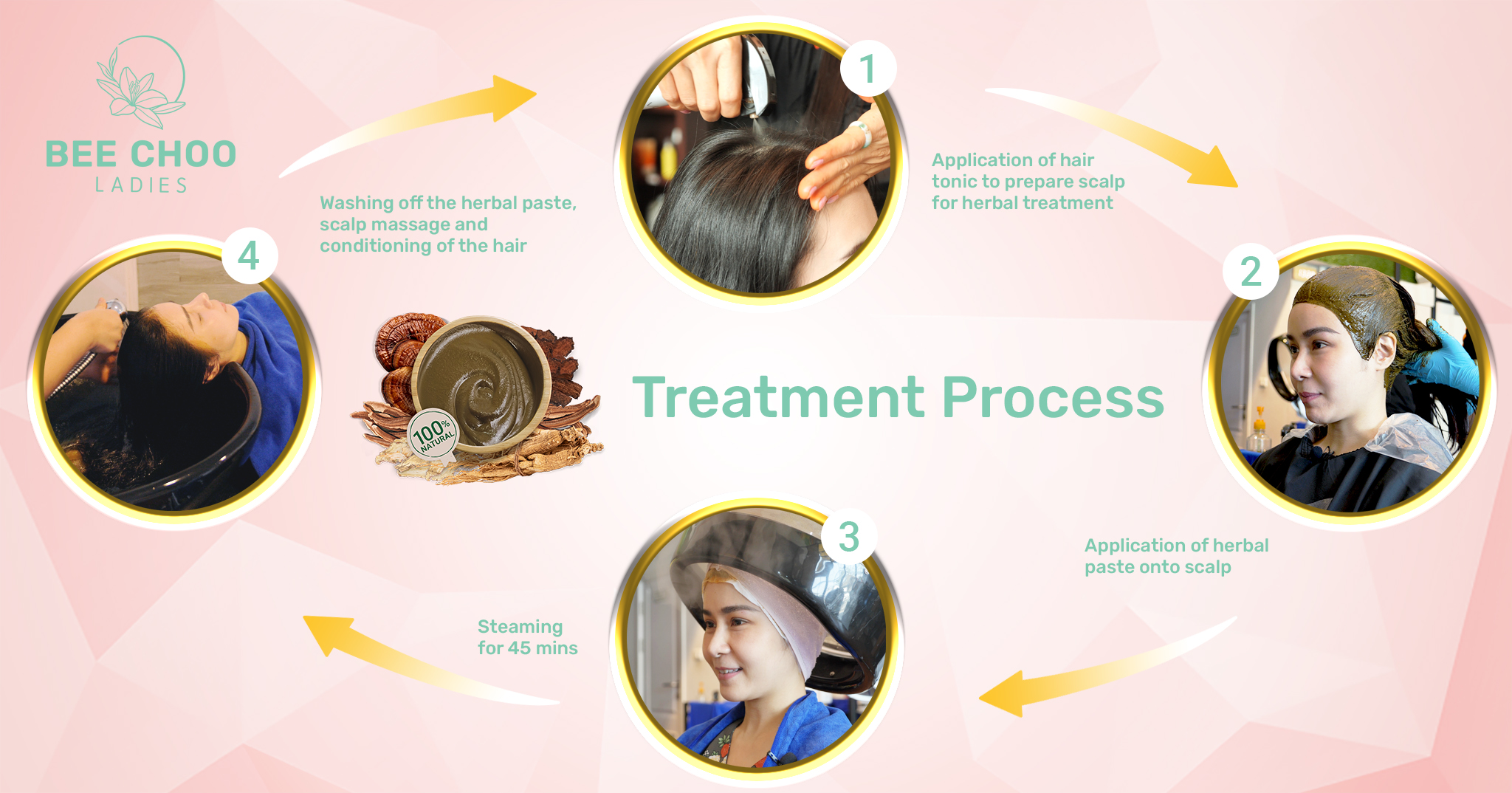
Consistently rated as the top Hair Loss Treatment in Singapore for women (or Muslimah Salon) in Singapore, our all natural, safe & highly effective herbal hair loss treatment gives your Dry/Damaged/Oily scalp instant rejuvenation. The natural dye contained in the treatment also covers your white hair to the roots in the process! Looking for natural hair dye similar to Henna, try us out!
See how it works above in our simple 4 step treatment process:
Step 1: Apply Ginger Wine Tonic on your Scalp
Step 2: Apply Herbal Paste to your Scalp
Step 3: Steam Treatment of your Hair for around ~45 mins (depending on hair condition)
Step 4: Rinse Off the Herbal Paste, Scalp Massage and Conditioning of your Hair
You can also watch the video showing how our herbal treatment is done!

BEE CHOO ORIGIN REVIEWS AND TESTIMONIALS
We are very happy to have effectively helped our customers with their hair issues over the years. Do read on and hear what they say about Bee Choo Origin treatment.
Disclaimer: Results may vary depending on various factors such as hair type, age, ethnicity, etc.
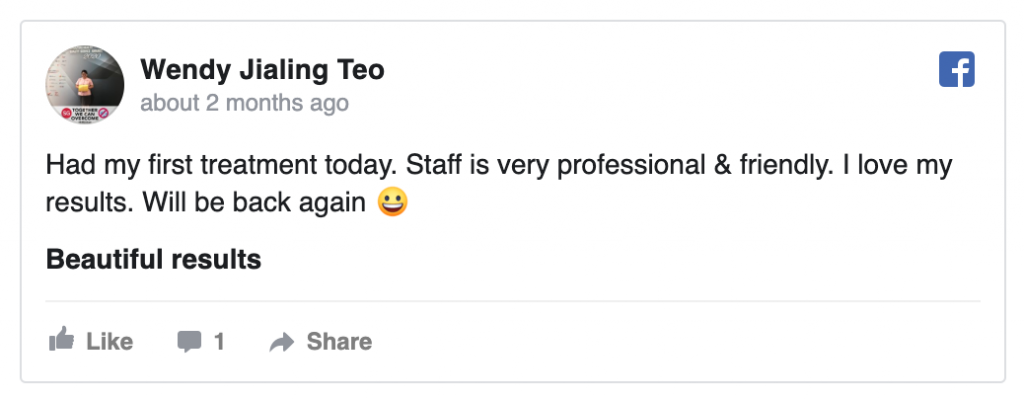
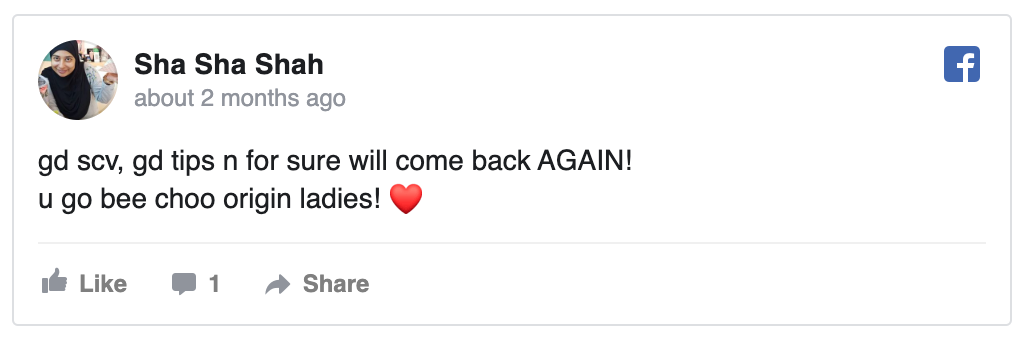


REVIEWS ON BEECHOO HAIR LOSS TREATMENT
Disclaimer: Results may vary depending on various factors such as hair type, age, ethnicity, etc.
OUR AWARDS & RECOGNITIONS
Certified with TQCSI in Singapore, Bee Choo Herbal Hair Treatment surpassed the stringent criteria of the ISO standards and demonstrates consistent ability to enhance customer satisfaction and assurance to deliver quality service which enables Bee Choo to receive a number of awards in the Asia Pacific. We are also featured in BusinessTimes, check it out here

The above are some of our awards from both Singapore and International Enterprises:.
AFFORDABLE PRICING
Our hair loss treatment prices are based on your hair length between $55 min to $81 maximum for à la carte herbal hair loss treatment. Strictly no hidden charges. You may choose to make upfront payment before treatment 
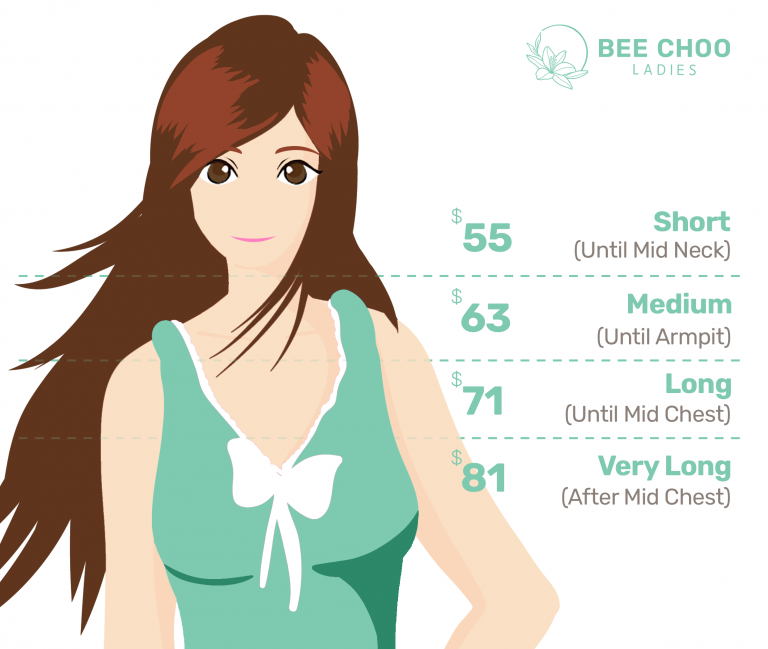
Give your hair a chance at the Number 1 Women Hair Loss Treatment in Singapore – affordable treatment, effective and reasonable for your budget 

Give yourself a total of 2:30 hours of leeway to ensure that you do not to rush the treatment process.
We want you to come to Bee Choo Ladies and enjoy the treatment process.
Our appointment system is to reduce waiting time. Do note that we may not be able to serve you immediately
Operating Hours:
Mondays to Fridays – 10am to 7pm (last appointment)
Weekends & Public Holidays – 9am to 4:30pm (last appointment)
Peak Hours: 5pm to 7pm Weekdays, Weekends & Public Holidays (15-30 mins of waiting time)